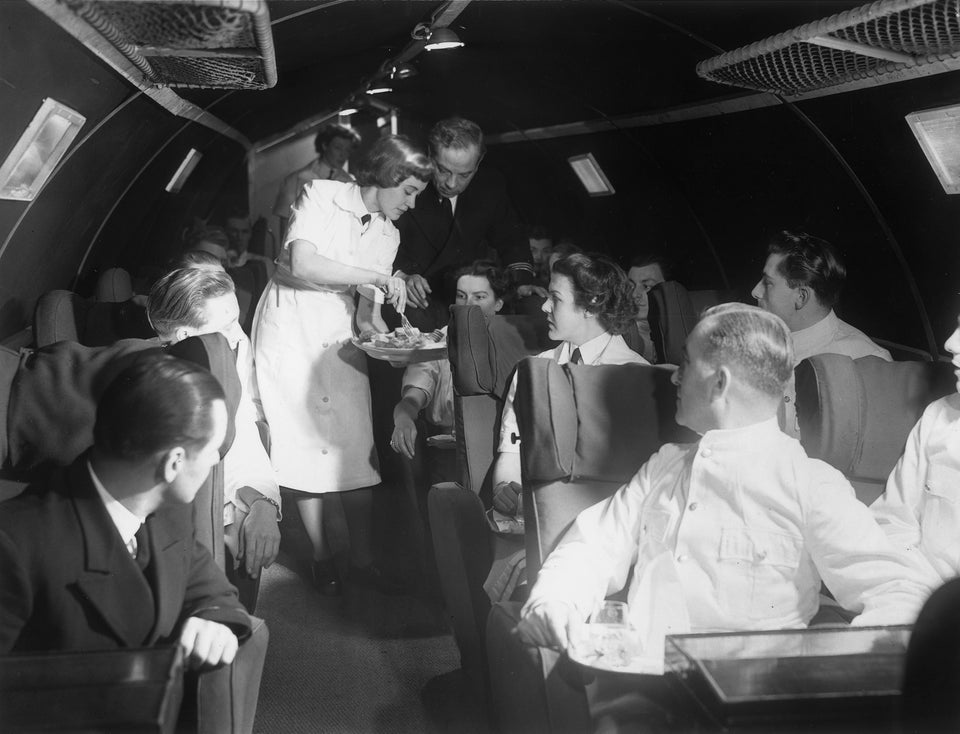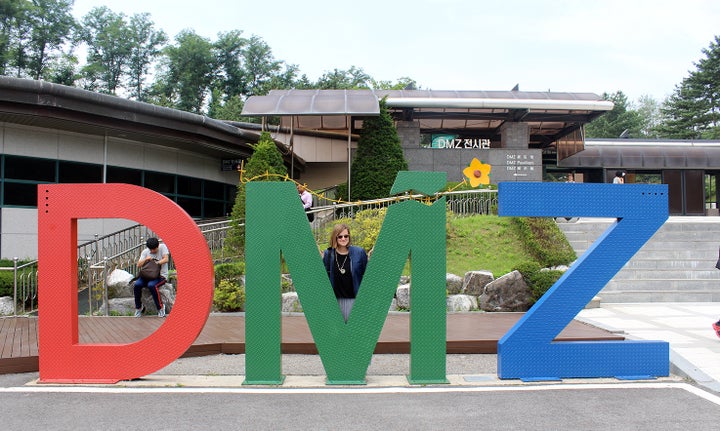
The last place I expected find myself after getting attacked by a (possibly rabid) dog in Mongolia and flying to South Korea for emergency medical treatment was the front line between South Korea and North Korea. But on my last day in Seoul, I decided I might as well make the most of my surprise detour and visit the Korean Demilitarized Zone (DMZ) ― the most heavily militarized border in the world.

Usually, one must reserve a trip to the buffer zone between the north and south far in advance ― tour companies are usually booked solid and passports take a few days to be cleared. Fortunately for me, I managed to jump onto a tour just 4 days in advance while receiving medical care at Samsung Hospital in Seoul. I booked a combined one-day DMZ and JSA (Joint Security Area) tour for my last day in Korea to study some hands-on history in the wake of my medical misadventure.
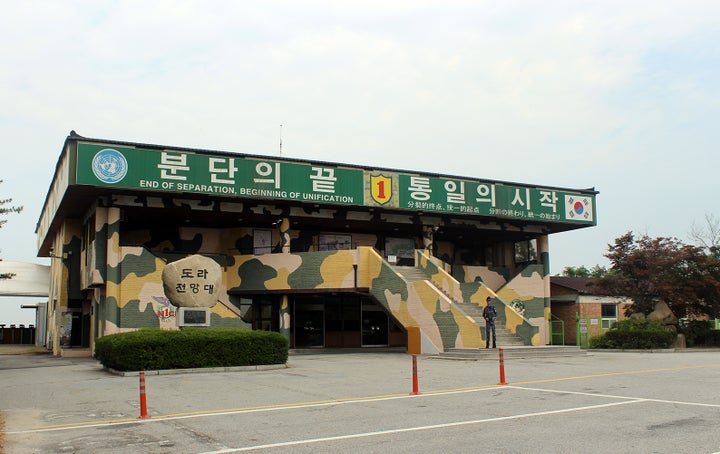
The DMZ was created after an armistice (not a peace treaty) was signed on July 27th, 1953 to end the Korean War. Situated on the 38th parallel, this hostile border has continued to be a site of tension and intermittent conflict. Because North and South Korea are still technically in an active state of war, there are a number of precautions that must be taken inside the DMZ. Since the area is littered with land mines, no wandering off course is allowed. Respectable clothing must be worn, and proper behavior is expected (offensive photo stunts, taunting, and pointing are not tolerated).
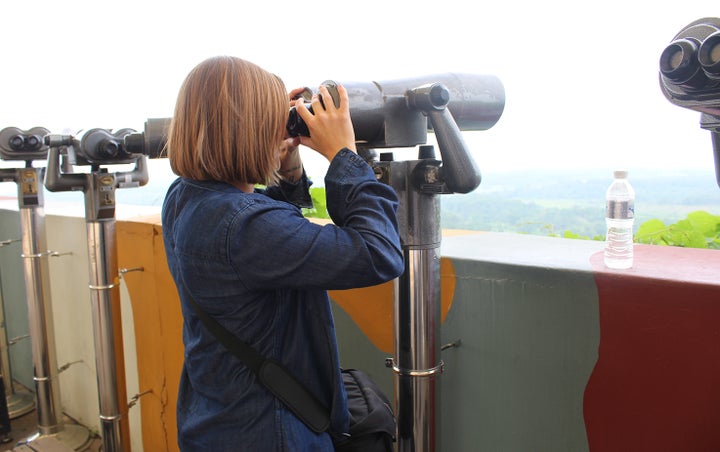
We started our tour of the DMZ at the Dora Observatory to peer through large binoculars into North Korea. As everything on both sides has been carefully curated, there is a map at the observation point indicating each visible building in North Korea. Most visitors, I noticed, directed their binoculars first towards Peace Village (called “Propaganda Village” by South Koreans), an uninhabited village and collective farm originally intended to lure defectors. Gazing into North Korea myself, I wished that I could see beyond the border lampposts and distant mountains to perceive the reality of everyday life in North Korea.
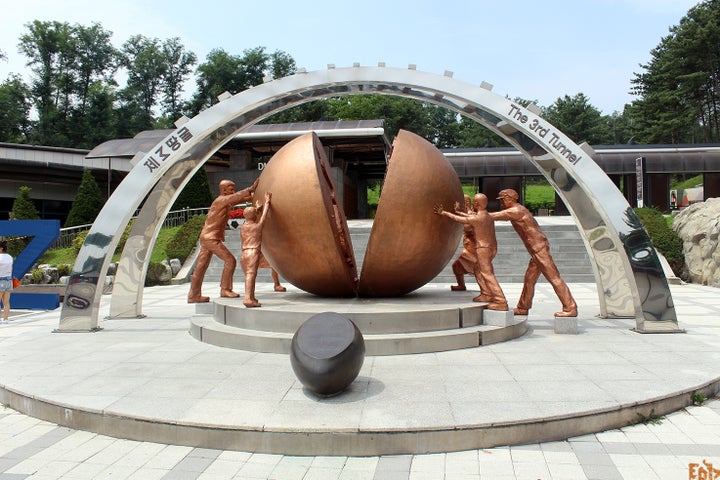
Riding a bare-bones “monorail” down into the well-guarded “Third Tunnel of Aggression” (a 1.635 kilometer-long North Korean infiltrator tunnel discovered in 1978), I found myself feeling grateful for my hard-hat and wondering if anyone with claustrophobia might panic. The slow ride down the dark compact shaft is like a giant MRI machine with no end in sight. Disembarking at the bottom, we took a short stroll down the 1.95 meters high and 2.1 meters wide tunnel ― which can accommodate 30,000 infantry per hour. At the end of the damp tunnel, we were confronted by a dead end ― when we hit the underground military demarcation line blocked with three concrete barricades to prevent penetration by the North.
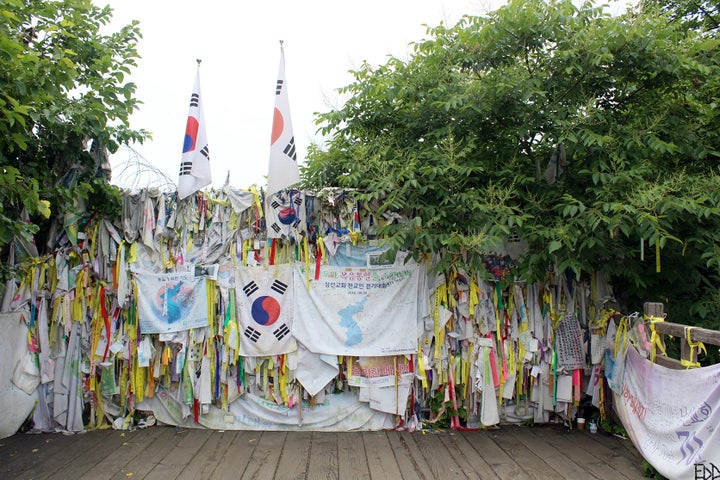
Back on the bus, we took a short ride to Imjingak Park on the banks of the Imjin River where the “Bridge of Freedom” lies. According to our tour guide, the bridge got its name when 13,000 prisoners of war and soldiers returning from North Korea crossed over this bridge and screamed, “Hurray for freedom!” When we reached the barricade and barbed wire blocking the end of the bridge, we were met with South Korean flags, messages for relatives in North Korea, and wishes for unification waving in the breeze.
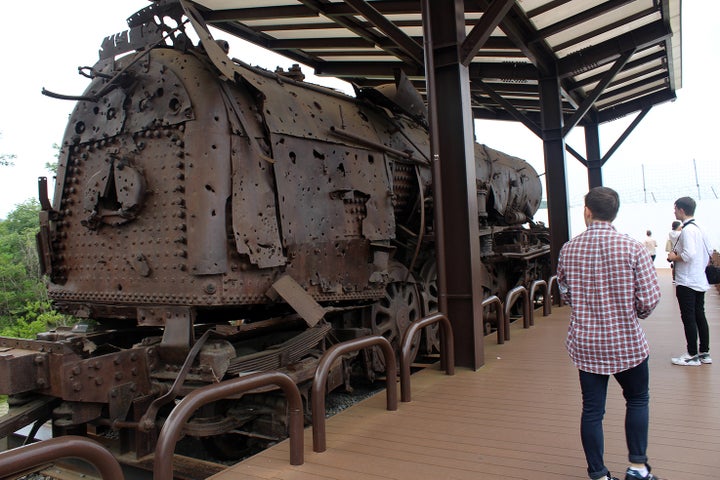
Nearby Freedom Bridge, we ran into a rusted relic from the Korean War ― a steam locomotive which once transported ammunition, troops, and tanks to the front lines. Derailed by bombs during the Korean War, the train was destroyed at Jangdan Station by more than 1,000 bullets fired by American troops. According to the adjacent sign, the locomotive is “a symbol of the tragic history of the division into North and South Korea.” On our walk back to the bus, we passed by a memorial altar (below) that serves as a place of worship for displaced people from North Korea to honor their ancestors on important holidays like New Year’s and Chuseok (the autumn harvest festival).
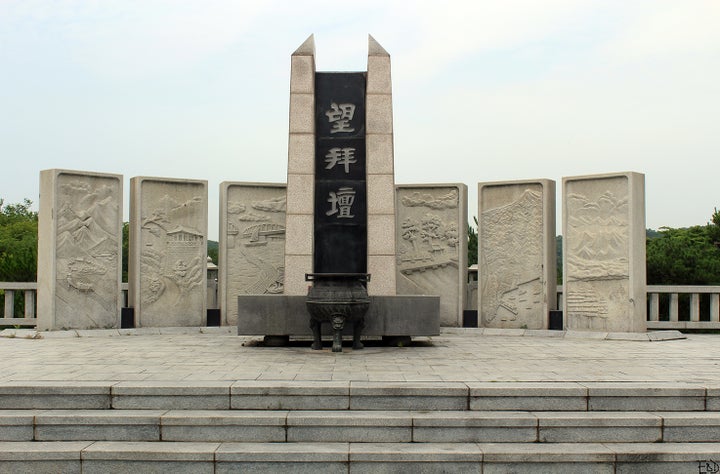
Our next stop was the heavily fortified Joint Security Area (JSA) ― the literal front line between North and South Korea. The JSA is manned by South Korean and American soldiers ― it is the only place where soldiers from North and South Korea directly face each other. A military escort accompanied our bus at all times ― there were repeated checks inside the bus to make sure our faces matched the photographs in our passports. Outside of the bus, we were required to walk in two lines, and carry our belongings in our hands or pockets since no bags are allowed.

In a small auditorium, we were given a security briefing with an overview of deadly encounters in the JSA. We were shown slides of the 1976 axe murder incident, when North Korean soldiers killed two American officers with the very axes that they were using to chop down a poplar tree blocking the view of a UN checkpoint. We were also told about the Soviet defector incident ― when Vasily Yakovlevich Matuzok’s successful sprint into South Korean territory triggered a fatal gun battle between North and South Korean soldiers. Before walking to the front line, we each signed a waiver, accepting “the possibility of injury or death as a direct result of enemy action.”
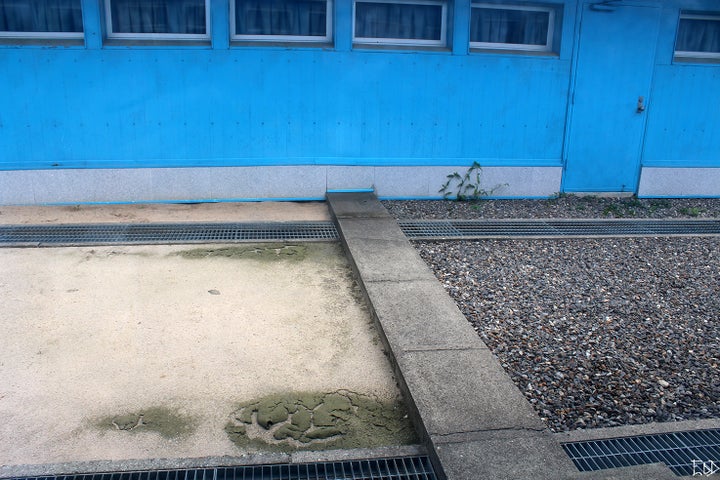
Approaching the front line in a two-line formation, we saw small blue buildings that belong to the U.S.-led United Nations Command ― built for negotiations between the two sides. The dividing line runs straight through the middle of the buildings and negotiating tables inside. Behind the buildings, South Korean soldiers stood at the ready to evade enemy fire, with half of their bodies hidden behind the back walls. As a dancer, I was intrigued by the choreography of the scene ― and by how demanding holding those battle-ready poses must be. The risk of hostile action is so great that President Obama was prevented from visiting the actual front line when he visited the DMZ.
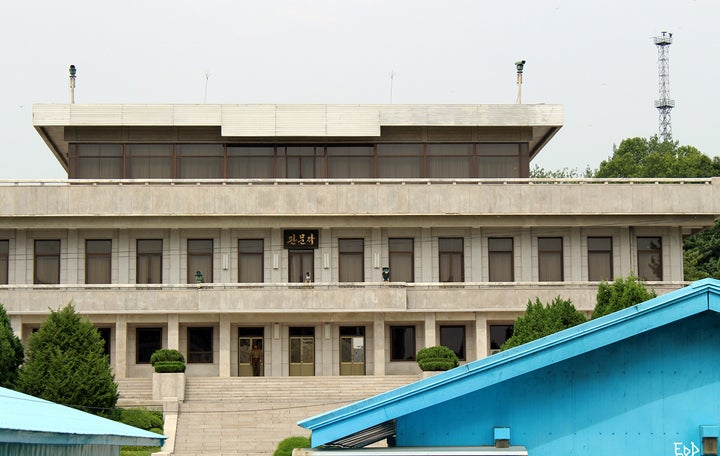
Across the border, a North Korean solider was standing guard in front of Panmungak (North Korea’s command post), but he ducked behind the pillars when the group started taking photographs. North and South Korean guards often toss insults and taunts at each other ― though not while we were there. The South Koreans have even been known to blast K-Pop, while the North Koreans prefer blasting marching melodies, communist operas, and anti-western rants.
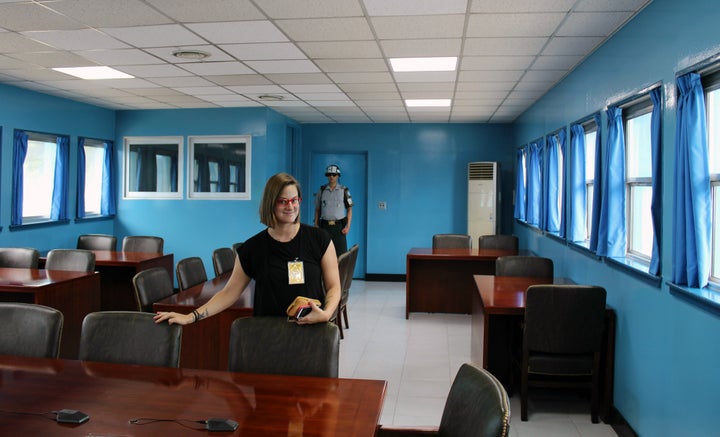
It’s never a guarantee that entry to the buildings will be granted ― it depends on the security situation at the time and if there is a North Korean tourist group on the other side. I found myself wondering what the tour is like from their side ― curious to know first-hand how the narrative differs. Fortunately, our group was allowed to enter the UN building and “cross over” the border into North Korea. Stepping past the long negotiating table, I entered North Korea ― and took some photos with the guards standing at the ready in the room. My feet firmly rooted in North Korea, I wished I could go even further ― and started to daydream about a future trip to Pyongyang.

Leaving the DMZ, I looked out the bus window as we drove past the axe murder memorial, the giant dueling flagpoles on both sides (North and South Korea have competed for decades in a game of whose is taller), and the only bridge that connects North and South Korea. I had been fortunate to speak with a North Korean refugee on the trip, and learn first-hand about the palpable pain on both sides. Despite all of the history and weaponry that I had seen, it was the image of the bridge that stuck with me the most ― a ready symbol of the possibility of peace. Exiting the barbed wire and barricades to drive back to Seoul, I was struck by how fragile peace can be, and how necessary it is to pursue, protect, and proclaim it.
